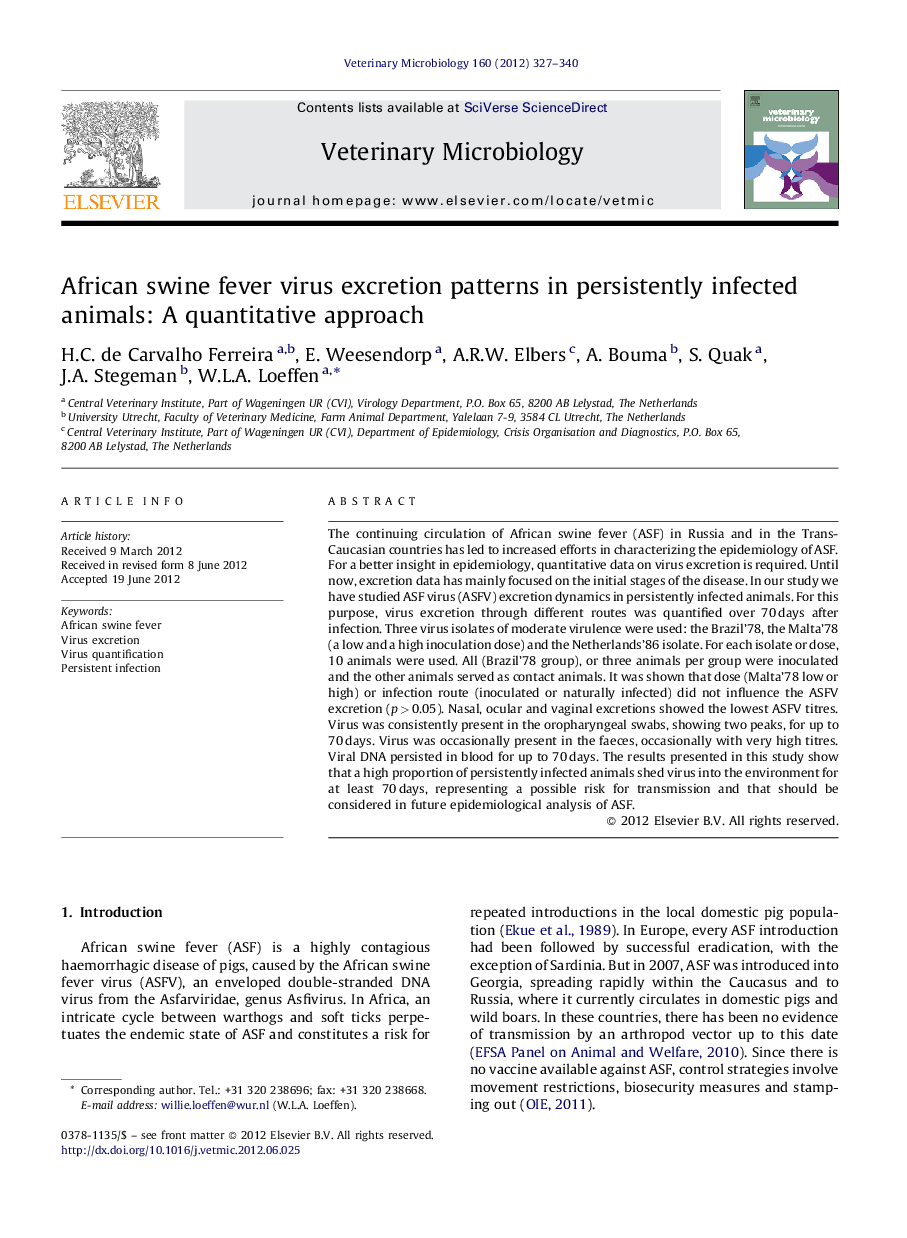| کد مقاله | کد نشریه | سال انتشار | مقاله انگلیسی | نسخه تمام متن |
|---|---|---|---|---|
| 5801293 | 1555381 | 2012 | 14 صفحه PDF | دانلود رایگان |

The continuing circulation of African swine fever (ASF) in Russia and in the Trans-Caucasian countries has led to increased efforts in characterizing the epidemiology of ASF. For a better insight in epidemiology, quantitative data on virus excretion is required. Until now, excretion data has mainly focused on the initial stages of the disease. In our study we have studied ASF virus (ASFV) excretion dynamics in persistently infected animals. For this purpose, virus excretion through different routes was quantified over 70 days after infection. Three virus isolates of moderate virulence were used: the Brazil'78, the Malta'78 (a low and a high inoculation dose) and the Netherlands'86 isolate. For each isolate or dose, 10 animals were used. All (Brazil'78 group), or three animals per group were inoculated and the other animals served as contact animals. It was shown that dose (Malta'78 low or high) or infection route (inoculated or naturally infected) did not influence the ASFV excretion (p > 0.05). Nasal, ocular and vaginal excretions showed the lowest ASFV titres. Virus was consistently present in the oropharyngeal swabs, showing two peaks, for up to 70 days. Virus was occasionally present in the faeces, occasionally with very high titres. Viral DNA persisted in blood for up to 70 days. The results presented in this study show that a high proportion of persistently infected animals shed virus into the environment for at least 70 days, representing a possible risk for transmission and that should be considered in future epidemiological analysis of ASF.
Journal: Veterinary Microbiology - Volume 160, Issues 3â4, 7 December 2012, Pages 327-340